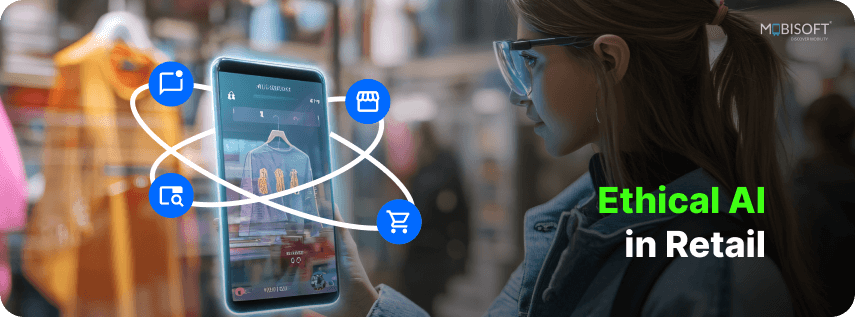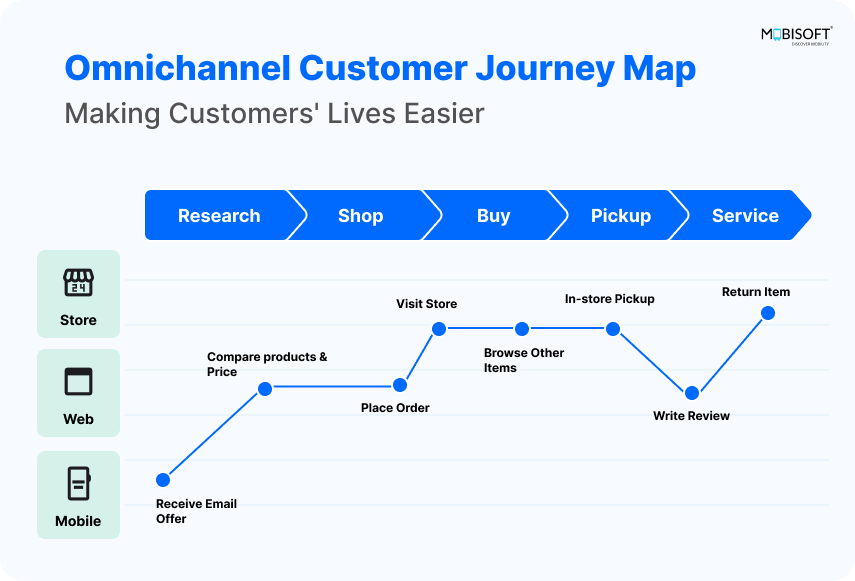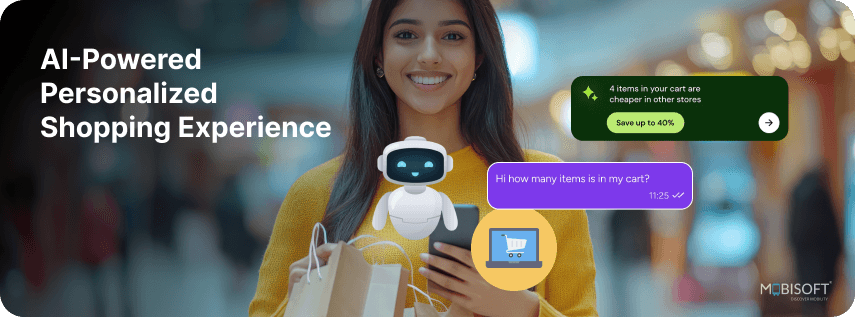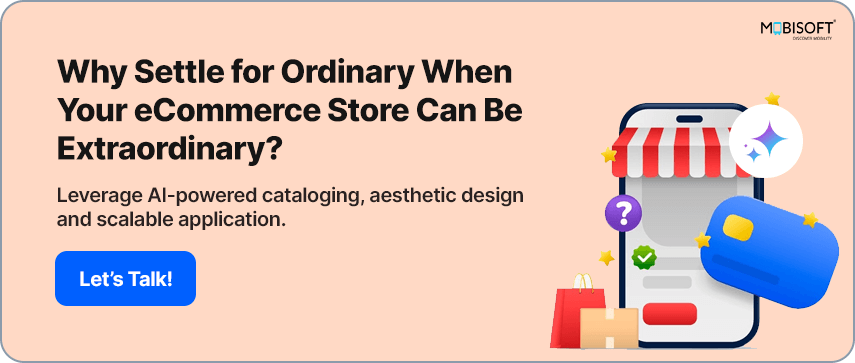Personalization in e-commerce has rapidly evolved from simple product recommendations to sophisticated, AI-driven e-commerce personalization experiences that anticipate and respond to individual customer needs in real time. As we move further into 2025 and beyond, the future of personalization and customization in e-commerce promises to be even more dynamic, immersive, and privacy-conscious, reshaping how brands engage customers, drive loyalty, and boost revenue. For brands looking to unify these experiences across all customer touchpoints, our Ultimate Omnichannel Retail Guide offers valuable insights into creating seamless, connected journeys.

Table of Contents
- Introduction: Why Personalization Matters
- The Evolution of E-commerce Personalization
- Key Technologies Powering the Future
- Emerging Trends in E-commerce Personalization (2025 & Beyond)
- Real-World Examples and Case Studies
- Balancing Personalization and Privacy
- Challenges and Solutions
- How to Prepare Your Business for the Future
- Frequently Asked Questions
- Conclusion & Actionable Next Steps

Introduction: Why Personalization Matters
Personalization in e-commerce is no longer a “nice-to-have”; it’s an expectation. Over 70% of customers now expect tailored interactions and are more likely to purchase when offered personalized shopping experiences. Businesses that fail to deliver risk losing customers to competitors who make shoppers feel seen and valued. The benefits are clear: increased engagement, higher conversion rates, improved customer loyalty, and greater lifetime value. For more insights, check out Personalization Technology in 2025 Explained (+ Upcoming Trends).
The Evolution of E-commerce Personalization
From Basic Recommendations to Hyper-Personalization
- Early Days: Personalization began with simple “recommended for you” sections based on browsing or purchase history.
- Today: AI and machine learning analyze vast datasets, including real-time behavior, demographics, and even mood, to deliver dynamic, individualized journeys across devices and channels, enabling dynamic content personalization.
- Tomorrow: Personalization will be context-aware, predictive, and seamlessly integrated into every touchpoint, from voice assistants to AR-powered shopping and beyond.
For businesses seeking tailored solutions, partnering with a reliable E-commerce App Development Company can bring these futuristic experiences to life.
Key Technologies Powering the Future
Artificial Intelligence & Machine Learning
AI in e-commerce and ML are at the heart of next generation personalization. They enable:
- Predictive product recommendations
- Dynamic content and pricing
- Real-time segmentation and targeting
- Automated content creation and adaptation for different channels
Generative AI
Generative AI creates personalized content product descriptions, images, and videos tailored to individual preferences, driving engagement at scale.
Augmented Reality (AR) & Virtual Reality (VR)
AR/VR are transforming product discovery and try on experiences, enabling customers to visualize products in their space or on themselves, further personalizing the shopping journey.
Computer Vision
Computer vision powers visual search and personalized recommendations by analyzing images, user-generated content, and real-time interactions.
Voice Commerce
Voice assistants will play a growing role, offering personalized recommendations and seamless shopping via spoken commands.
For a deeper look at how these technologies are shaping the industry, explore this collection of AI personalization examples that will surprise you. It highlights how leading brands use AI to deliver hyper-personalized shopping experiences in 2025 and beyond.
Emerging Trends in E-commerce Personalization (2025 & Beyond)

| Trend | Description & Impact |
| Hyper-Personalization | Real-time, context-aware experiences using AI in e-commerce and big data deliver relevant offers at the right time. |
| Omnichannel Personalization | Unified customer profiles and experiences across web, app, email, social, and in-store. |
| Predictive Personalization | AI anticipates needs, predicts intent, and automates recommendations and offers. |
| Privacy Conscious Personalization | Transparent data use, consent management, and privacy-first strategies are required due to evolving regulations. |
| Personalized Loyalty Programs | Dynamic rewards and offers based on individual preferences and behaviors. |
| Community Building | Personalized content and experiences that foster brand communities. |
| Personalized Mobile Experiences | Mobile first, location aware, and contextually relevant interactions. |
| Generative AI Content | Automated creation of personalized product descriptions, visuals, and campaigns. |
| Cookieless Personalization | Shift to first-party data and contextual targeting as third-party cookies disappear. |
To dive deeper into these developments, explore this in depth guide on trends reshaping e-commerce personalization in 2025. It offers valuable insights into how forward thinking brands are adapting personalization strategies to meet evolving consumer expectations.
Real-World Examples and Case Studies
- Amazon: Uses AI in e-commerce for hyper-personalized product recommendations, dynamic homepages, and “frequently bought together” bundles, driving massive engagement and sales.
- Netflix: Suggests content based on viewing history, time of day, and preferences, keeping users engaged and reducing churn.
- Walmart: Virtual try-on tools and predictive replenishment recommendations powered by AI boost both convenience and conversion.
- Starbucks: Real-time, location-based offers and personalized mobile app experiences increase loyalty and repeat purchases.
- Boden: AI-powered segmentation and 1:1 personalization across digital channels streamline the customer journey and increase ROI.
To explore how leading brands are implementing similar strategies, check out this comprehensive guide to e-commerce personalization trends in 2025. It highlights innovative use cases and evolving tactics shaping the future of personalized shopping experiences. And how leading brands are implementing similar strategies, review our detailed E-commerce Delivery Solution Case Study, which showcases real-world personalization in action.
Balancing Personalization and Privacy

While 80% of consumers prefer personalized shopping experiences, 91% worry about privacy. New laws like GDPR and CCPA require brands to:
- Be transparent about data collection and use
- Obtain clear consent
- Offer easy opt-outs
- Use privacy-preserving technologies (e.g., encryption)
- Collect only the necessary data.
Brands that prioritize privacy and empower customers with control over their data will win trust and loyalty in the long run. For a deeper dive into how to align privacy with personalization, read this detailed guide on balancing personalization and privacy in e-commerce.
Challenges and Solutions
| Challenge | Solution |
| Data Collection & Quality | Invest in robust data management, focus on first-party data, and maintain data accuracy. |
| Technology Integration | Choose scalable, interoperable personalization platforms; start small and expand as needed. |
| Privacy & Compliance | Adopt privacy-first practices, comply with regulations, and communicate transparently. |
| Resource Constraints | Leverage AI to automate and scale personalization; outsource or partner as needed. |
| Cookieless Future | Shift to first-party data, contextual targeting, and innovative engagement strategies. |
For a more in depth exploration of the challenges in implementing personalization strategies, including real-world considerations and industry insights, refer to this detailed guide by FasterCapital.
How to Prepare Your Business for the Future

- Audit Your Data: Ensure you have quality first-party data and a unified customer view.
- Invest in AI & Automation: Adopt AI-powered personalization tools for real-time, scalable experiences.
- Prioritize Privacy: Be transparent, compliant, and give customers control over their data.
- Embrace Omnichannel: Deliver seamless, personalized experiences across all channels.
- Test & Optimize: Use A/B testing, analytics, and feedback to continually refine personalization strategies.
- Foster Community: Build loyalty with personalized rewards, content, and community engagement.
For more insights on what's ahead, explore this expert analysis on the future of e-commerce personalization for 2025 and beyond.
Frequently Asked Questions
Q: What is hyper-personalization in e-commerce?
A: Hyper-personalization uses AI in e-commerce and real-time data to deliver highly relevant, individualized experiences at every touchpoint, from product recommendations to dynamic pricing and content.
Q: How does AI improve personalization?
A: AI analyzes vast amounts of customer data to predict preferences, automate recommendations, and adapt experiences in real-time boosting engagement and sales.
Q: What are the main privacy concerns with personalization?
A: Consumers worry about data misuse, lack of transparency, and security breaches. Address these by being transparent, obtaining consent, and using privacy-preserving technologies.
Q: How will the end of third-party cookies affect personalization?
A: Brands will rely more on first party data, contextual targeting, and innovative engagement strategies to maintain effective personalization.
Q: What results can businesses expect from advanced personalization?
A: Companies using advanced personalization can see up to a 30% increase in revenue, higher engagement, and improved customer loyalty.
Conclusion & Actionable Next Steps
The future of personalization in ecommerce is intelligent, immersive, and privacy conscious. As AI in e-commerce, machine learning, and data analytics continue to advance, brands that invest in hyper personalized, omnichannel personalization experiences while respecting privacy will stand out, build deeper relationships, and drive sustainable growth.
Whether you’re enhancing an existing platform or launching a new one, our Custom E-commerce Development services can help tailor solutions that align with your brand’s vision and customer needs.
Ready to future-proof your e-commerce business?
Contact Mobisoft Technologies to explore AI-powered personalization solutions that delight customers and drive results.
Explore our innovative tools and start building the personalized shopping experiences of tomorrow today!
Citations:
- 2025 Trends in e-Commerce Personalization | SAP Emarsys
- How AI Is Changing Ecommerce Personalization
- Personalization in retail: Trends, technologies, and tips
- 9 Ecommerce Personalization Trends to Try in 2025
- 15 successful eCommerce personalization examples for any business
- 10 examples of hyper-personalized marketing
- Mastering e-commerce personalization for brand success
- AI Personalization Examples That Will Surprise You | Idomoo Personalized Video
- Challenges in Implementing Personalization Strategies - FasterCapital
- Balancing Personalization and Privacy in Ecommerce
- 50+ E-commerce Personalization Statistics & Trends (2025)
- The Future of Personalization Is Here: Trends to Look Out for in 2025 - Shopify India
- 31 Brilliant Examples of eCommerce Personalization
- Ecommerce Personalization Trends to Be Aware Of | Monetate
- Ecommerce Personalization Guide: Benefits, Tools & Strategies
- AI powered Personalization in Ecommerce Industry in 2025
- 21 Real-Life Marketing Personalization Examples to Learn From
- Personalization Technology in 2025 Explained (+ Upcoming Trends)
- Personalization Case Studies | Dynamic Yield
- Personalization Examples and Case Studies | Recombee
- Challenges in E-commerce personalization
- Ecommerce personalization: benefits, challenges, and how to implement - Algolia Blog
- 9 common personalization challenges (and how to overcome them) | Contentful
- Challenges in Ecommerce: Personalized Customer Interactions | UpStart Commerce
- 5 ecommerce personalization trends you need to know | Contentserv
- 3 Common E-Commerce Challenges: A Roadmap to Success | SAP Emarsys
- The Future of Personalization Is Here: Trends to Look Out for in 2025 - Shopify





 June 11, 2025
June 11, 2025


